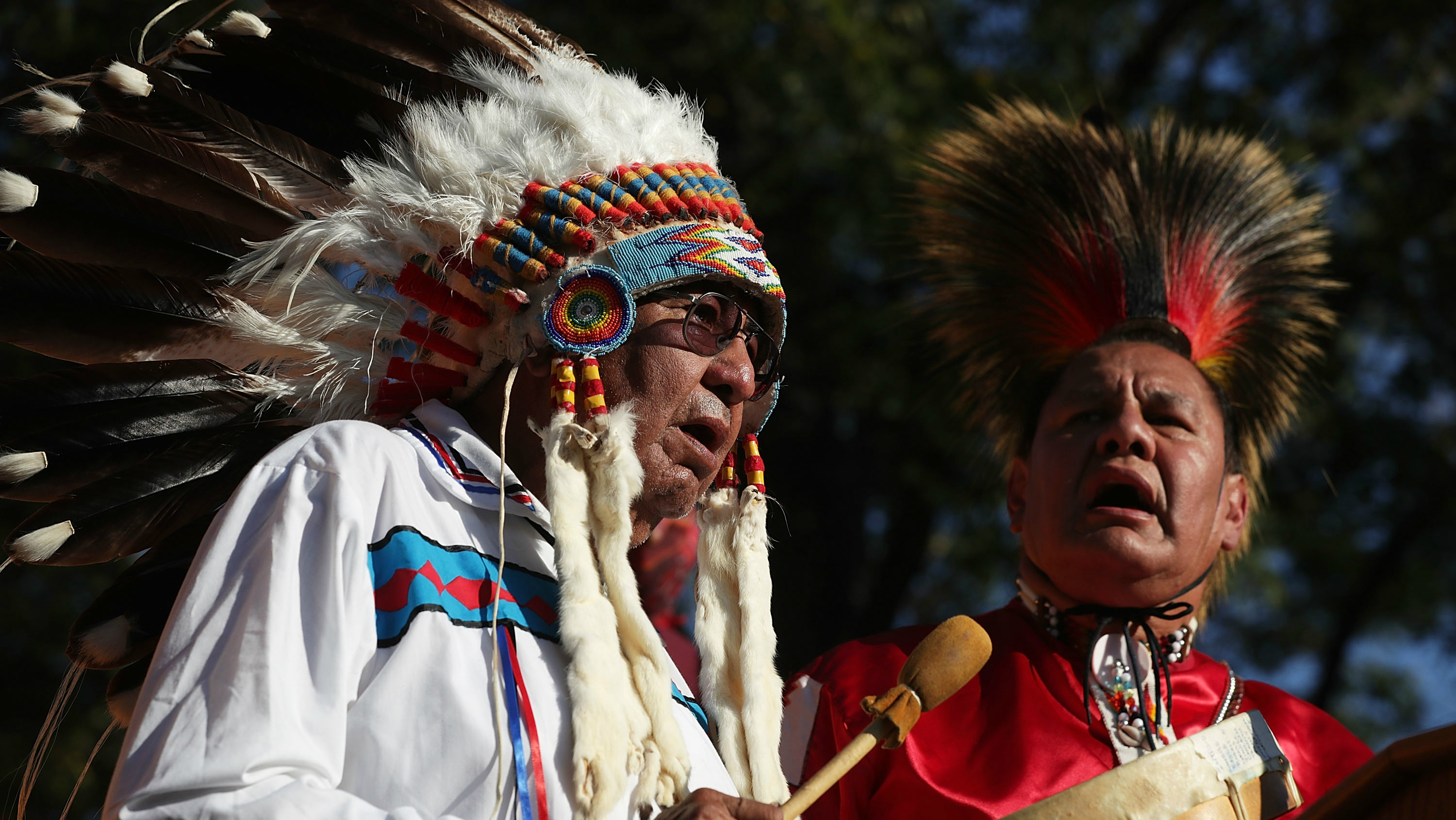The Dakota pipeline: Native Americans vow to fight on
Standing Rock Sioux say controversial oil line threatens their water supply and cultural heritage

A group of Native Americans and environmental activists have pledged to continue demonstrations against the controversial Dakota Access oil pipeline until the project is shut down.
Senator and former presidential candidate Bernie Sanders has joined a chorus of high profile voices urging President Barack Obama to intervene after taking part in a protest outside the White House last week.
"We cannot allow our drinking water to be poisoned so that a handful of fossil fuel companies can make even more in profits," the Democrat said. "We stand united in saying: stop the pipeline, respect Native American rights and let us move forward to transform our energy system away from fossil fuels."
The Week
Escape your echo chamber. Get the facts behind the news, plus analysis from multiple perspectives.

Sign up for The Week's Free Newsletters
From our morning news briefing to a weekly Good News Newsletter, get the best of The Week delivered directly to your inbox.
From our morning news briefing to a weekly Good News Newsletter, get the best of The Week delivered directly to your inbox.
What is the pipeline?
The $3.8bn project involves a 1,172-mile pipeline, which crosses four states, transporting more than 470,000 barrels per day of crude oil into Illinois where it will then be moved on to Texas.
But a protest movement has sprung up at Cannon Ball in North Dakota, close to Lake Oahe, a culturally important reservoir on the Missouri River where the line was meant to cross, says Reuters.
"In a stunning twist last week, the Justice Department and other federal agencies intervened to delay construction in what industry and labour representatives called an 'unprecedented' move," it adds.
A free daily email with the biggest news stories of the day – and the best features from TheWeek.com
Why is it so controversial?
The Standing Rock Sioux tribe, whose reservation is half a mile below the proposed site, say the pipeline threatens sacred ancestral sites and a spill would pollute their water supplies.
"We have not been consulted in an appropriate manner about...the traditional cultural properties, sites, or landscapes vital to our identity and spiritual wellbeing," said one protester.
Demonstrations at the site have been ongoing for weeks, with reports of police brutality and the use of dogs by a private security firm.
The Guardian notes that the US Army Corps of Engineers, which has jurisdiction over pipelines that cross major waterways, "approved the Dakota Access plan despite warnings from the Environmental Protection Agency that leaking oil could pollute the rivers".
Energy Transfer Partners, the company building the Dakota Access pipeline, has rejected the claims made by protesters and says it plans to go ahead with the project as planned.
What happens next?
During the temporary suspension, the US Army Corps of Engineers will review whether the National Environmental Policy Act (NEPA) and other federal laws were followed correctly.
Attorney Doug Hayes said it was "encouraging" that Obama had put the project on hold. "The administration is clearly listening to the Standing Rock tribe and its indigenous allies," he told the Huffington Post.
One possible solution to the problem would be rerouting the pipeline, but this also presents "substantial challenges", says Reuters. "The surrounding land where the pipeline could cross has a number of national parks or wetlands, commercial and residential uses, or Native American reservations," it says.
Meanwhile, protesters have vowed to fight on. "No one can live without water. We just want this to stop. We won't leave until it does," said Valerie Eagle Shield, a member of the Standing Rock Sioux tribe.
-
 Courgette and leek ijeh (Arabic frittata) recipe
Courgette and leek ijeh (Arabic frittata) recipeThe Week Recommends Soft leeks, tender courgette, and fragrant spices make a crisp frittata
-
 Trump’s power grab: the start of a new world order?
Trump’s power grab: the start of a new world order?Talking Point Following the capture of Nicolás Maduro, the US president has shown that arguably power, not ‘international law’, is the ultimate guarantor of security
-
 Unrest in Iran: how the latest protests spread like wildfire
Unrest in Iran: how the latest protests spread like wildfireIn the Spotlight Deep-rooted discontent at the country’s ‘entire regime’ and economic concerns have sparked widespread protest far beyond Tehran